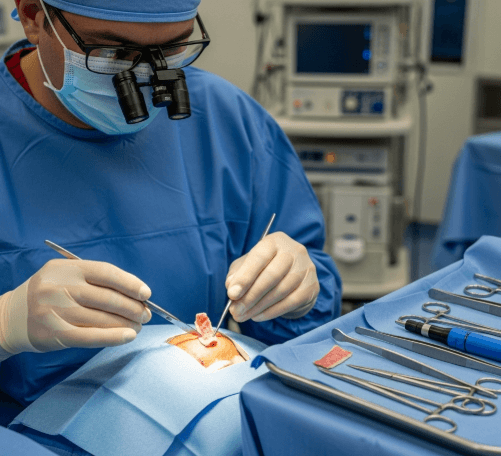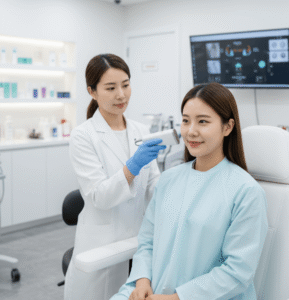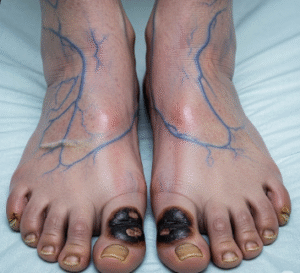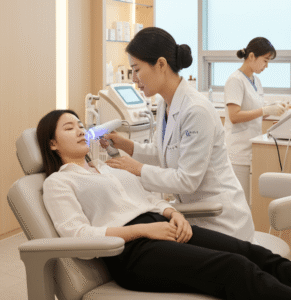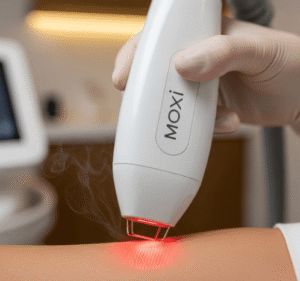What it is
Mohs micrographic surgery in Korea is a highly specialized surgical technique used to treat skin cancer, especially basal cell carcinoma (BCC) and squamous cell carcinoma (SCC).
The procedure involves precisely removing cancerous tissue layer by layer, while immediately examining each layer under a microscope. This continues until no cancer cells are detected.
→ The main advantage of Mohs surgery is its high cure rate and tissue preservation, making it ideal for cancers located on cosmetically sensitive areas such as the face, nose, eyelids, ears, lips, and hands.
• In Korea, Mohs surgery is performed in dermatology hospitals and cancer centers by dermatologic surgeons trained in oncology and reconstructive techniques.
• The technique ensures complete cancer removal while minimizing scarring.
Why it’s done
Patients in Korea undergo Mohs surgery for:
→ Skin cancer removal → Especially BCC and SCC that are recurrent, aggressive, or located in high-risk areas.
→ Tissue conservation → Preserves as much healthy tissue as possible for better cosmetic results.
→ High cure rate → Mohs surgery has the highest success rate of any skin cancer surgery.
→ Minimizing recurrence → Ensures complete removal, lowering the risk of regrowth.
→ Aesthetic and functional preservation → Essential in Korea, where both health and cosmetic outcomes are highly valued.
Alternatives
Other treatments for skin cancer include:
• Standard excision → Cutting out the tumor with a margin of surrounding skin.
• Cryotherapy → Freezing small, superficial cancers.
• Topical treatments → Imiquimod or 5-fluorouracil for superficial cancers.
• Radiation therapy → For patients not suited for surgery.
• Laser ablation or photodynamic therapy (PDT) → For certain superficial cases.
→ While these may be suitable for some, Mohs surgery remains the gold standard for high-risk or facial skin cancers.
Preparation
Before undergoing Mohs micrographic surgery in Korea, patients prepare with:
- Dermatology-oncology consultation → Confirms diagnosis and assesses tumor type and size.
- Biopsy confirmation → Cancer type and aggressiveness are identified.
- Medical history review → Checks medications, allergies, and bleeding risks.
- Medication adjustment → Blood thinners may need to be paused under doctor supervision.
- Patient education → Detailed explanation of procedure length, healing, and reconstructive options.
→ Korean hospitals often provide digital imaging to map the tumor before surgery.
How it’s done
Mohs micrographic surgery in Korea is performed in steps:
- Local anesthesia → The area around the tumor is numbed.
- First tissue removal → The visible cancer and a thin surrounding layer are excised.
- Microscopic analysis
- The excised tissue is immediately processed and examined under a microscope.
- A “map” of the tumor is drawn to track remaining cancer cells.
- Layer-by-layer removal
- If cancer cells remain, only the affected area is re-excised.
- This process repeats until no cancer cells are found.
- Reconstruction
- Small wounds may heal naturally.
- Larger wounds are closed with sutures, skin flaps, or grafts for best cosmetic results.
→ The procedure can last several hours, as each stage of removal and analysis takes time.
Recovery
Recovery after Mohs surgery in Korea depends on wound size and reconstruction method:
• Immediate care → Bandage and antibiotic ointment applied.
• Healing time → Small wounds may heal in 2–3 weeks; larger reconstructions may take longer.
• Stitch removal → Usually after 5–14 days, depending on the site.
• Scar care → Silicone gels, laser therapy, or scar revision are often included in Korean aftercare.
• Follow-up visits → To monitor for recurrence and healing progress.
→ Many Korean clinics integrate laser scar refinement to ensure minimal visible scarring.
Complication
Possible risks include:
- Bleeding or infection → Rare with proper sterile technique.
- Pain or swelling → Temporary and usually mild.
- Scarring → Minimized with reconstructive techniques and scar management.
- Recurrence → Very low, but possible in aggressive cancers.
- Nerve damage → Rare, but possible in deep or complex surgeries.
→ In Korea, complication rates are low due to skilled surgeons and advanced post-care protocols.
Treatment option in Korea
Korea offers world-class Mohs micrographic surgery programs:
→ Dermatologic surgery centers → Equipped with on-site pathology labs for immediate tissue analysis.
→ Multidisciplinary care → Dermatologists, oncologists, and plastic surgeons collaborate for cancer removal and reconstruction.
• Cutting-edge reconstruction → Use of flaps, grafts, and laser scar therapy ensures both medical and cosmetic success.
• Advanced scar management → Post-operative care includes fractional laser, silicone dressings, and LED therapy.
• Medical tourism → Many international patients choose Korea for Mohs surgery due to its combination of oncologic safety and aesthetic precision.
→ With its highest cure rates, tissue-conserving approach, and advanced reconstructive techniques, Mohs micrographic surgery in Korea ensures complete cancer treatment while maintaining natural appearance.

